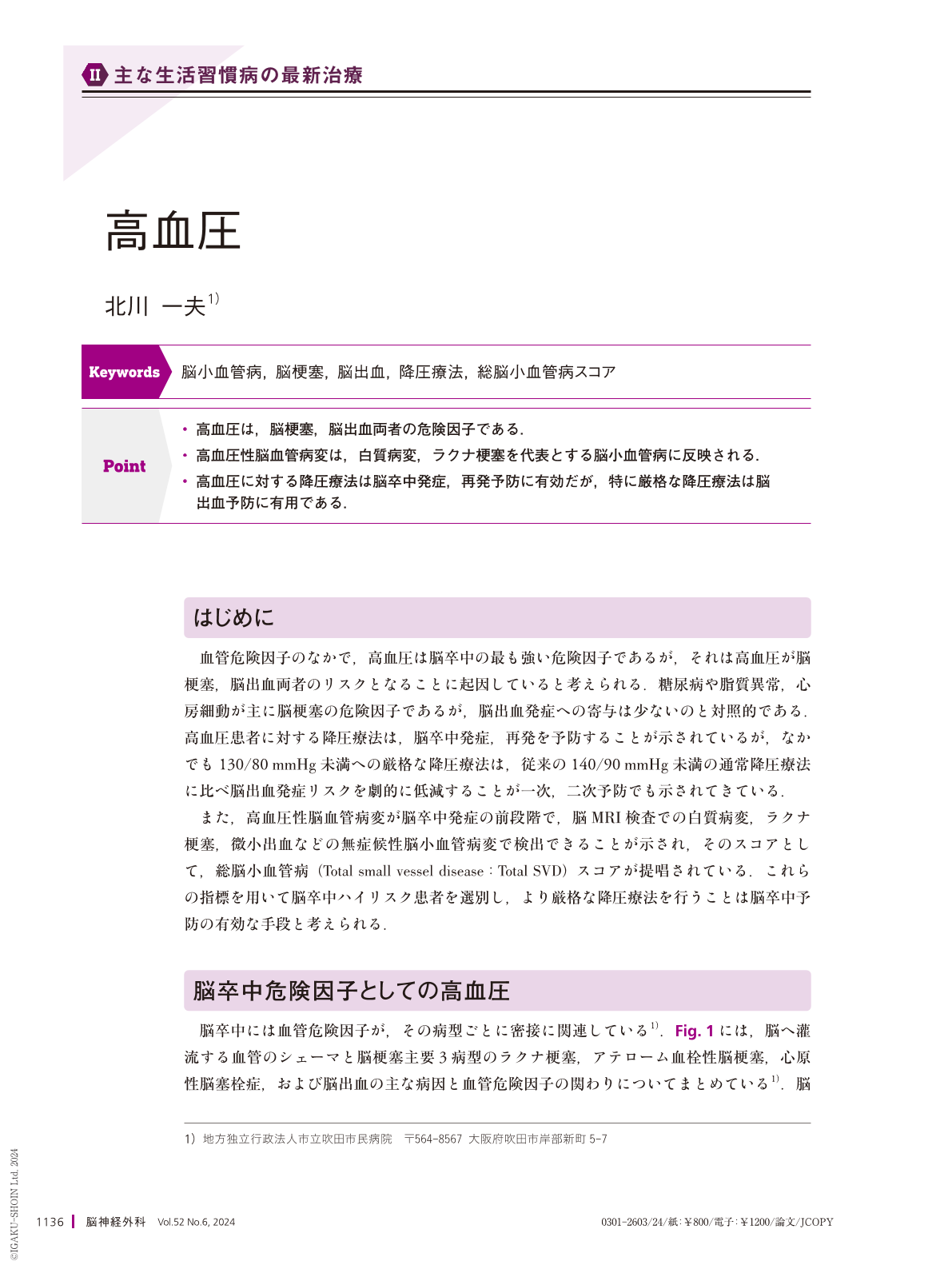Japanese
English
- 有料閲覧
- Abstract 文献概要
- 1ページ目 Look Inside
- 参考文献 Reference
Point
・高血圧は,脳梗塞,脳出血両者の危険因子である.
・高血圧性脳血管病変は,白質病変,ラクナ梗塞を代表とする脳小血管病に反映される.
・高血圧に対する降圧療法は脳卒中発症,再発予防に有効だが,特に厳格な降圧療法は脳出血予防に有用である.
Hypertension is the most important risk factor for stroke. For both primary and secondary stroke prevention, the target blood pressure level is 130/80 mmHg in the current guidelines. Intensive blood pressure lowering is useful for the prevention of intracerebral hemorrhage; therefore, blood pressure control of<120/80 mmHg would be beneficial for patients at a high risk of hemorrhagic stroke, including those with factors such as a history of intracerebral hemorrhage, use of more than two antithrombotic drugs, and the presence of more than two cerebral microbleeds. For people without a history of stroke, the evaluation of cerebral small-vessel disease on brain magnetic resonance imaging(MRI)is useful for risk stratification of incident stroke. Brain MRI reveals white matter hyperintensities, lacunar infarctions, cerebral microbleeds, and enlarged perivascular spaces, which are representative of small vessel disease. The total small-vessel disease score has been developed to evaluate the total small vessel disease burden and ranges 0-4. People with at least one small-vessel disease have a higher risk of incident stroke; therefore, intensive blood pressure control is important for stroke prevention.

Copyright © 2024, Igaku-Shoin Ltd. All rights reserved.


